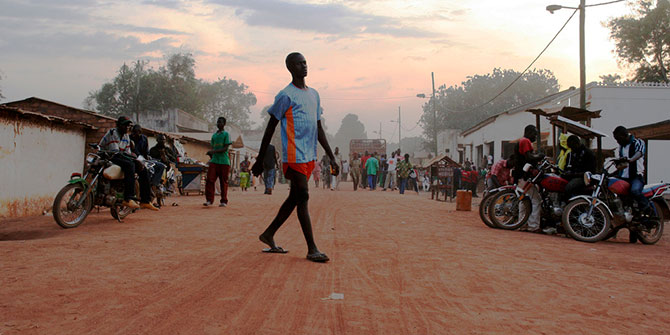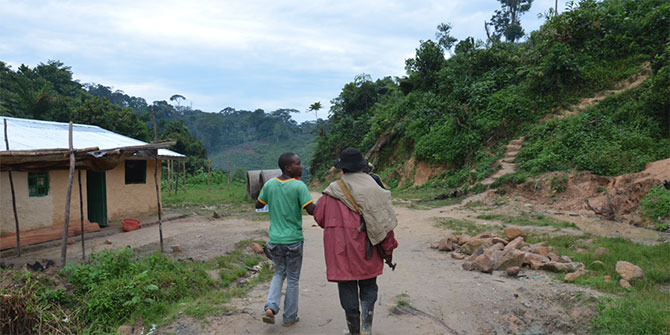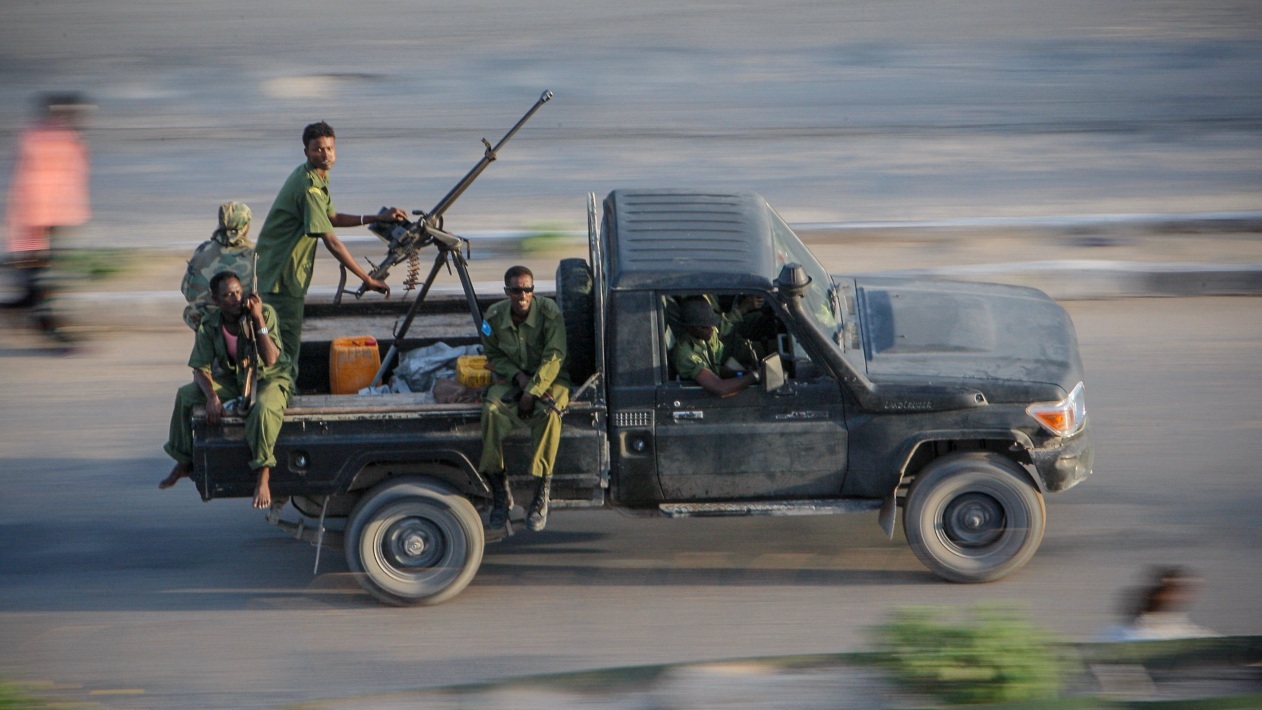This post originally appeared on the blog, Justice in Conflict. Patrick Wegner says that while the Kony 2012 campaign can accomplish a lot of good, it fails to address the primary issues.
Yesterday evening, a Youtube video by Invisible Children on Joseph Kony, the Chairman of the Lord’s Resistance Army, started popping up in my Facebook newsfeed. I didn’t think much of it as my newsfeed is usually pretty full with articles and reports from Uganda, as I follow many different organisations working on the LRA. Since I am going through all LRA related news on a daily basis anyway, I watched it during my evening workout, and it left me impressed. It is a superb example of an advocacy video that is very touching while giving you the feeling that you can make a change.
The video describes, in sketchy detail, how the Lord’s Resistance Army has been abducting children for the past 26 years in order to fill its ranks and to wage an apparently causeless conflict in which it mutilates civilians (not my opinion but the way the conflict is presented). The narrative is as simple as it is powerful: Kony is the bad guy who has abducted thousands of children and needs to be stopped. Jason Russell, one of the founders of Invisible Children Inc., his little son, and all of us are the good guys whose mission should be to stop Kony. The means: mobilise as many people as possible to lobby influential artists and politicians to stand up for the cause to “remove Joseph Kony from the battlefield”. This in turn will make sure that there is enough awareness and civil society pressure surrounding the LRA conflict that the 100 combat equipped US troops deployed by the Obama administration in autumn 2011 stay until their job to help catching Kony is finished.
The hits our blog received so far today demonstrated to me how effective the message has been: we had nearly 9 times the traffic we would have on a normal day around noon. Most people found the site searching for ‘Kony’ or ‘Joseph Kony’, our articles on Uganda being by far the most read ones. It is both assuring and scary how many people can be mobilised within 24 hours by publishing a well-made advocacy/documentary clip.
Don’t get me wrong, I do think a lot of good things can come out of this. It is true that the security interests of the US in engaging the LRA are minimal. It is also true that the troops will be withdrawn from Central Africa if they are not successful relatively soon, and that the public pressure to keep them there is not strong enough.
It is also true that Invisible Children has done some good work in northern Uganda and the Democratic Republic of Congo (DRC). The most recent and maybe most relevant example is that Invisible Children has opened up a reception centre for abducted children and adolescents who escape the LRA in the DRC. It is the only reception centre in the DRC so far, and its opening can be expected to have a real impact since people who fled from the LRA have really nowhere else to turn since the rebel group left northern Uganda with its reception centres. Advocating to keep US troops in Uganda and donating some money to Invisible Children’s ‘TRI’ programme is thus not a bad idea.
Yet, there are several caveats and points of criticism that arise when having a closer look at the advocacy campaign and the local context in Uganda, DRC, the Central African Republic and Southern Sudan. Let me first just briefly point out the typical ‘tricks’ used in advocacy videos to generate a maximum of indignation and mobilise as many people as possible. The video shows posters apparently printed for the Kony 2012 campaign that display Kony together with Adolf Hitler and Osama bin Laden. It is ridiculous to compare Joseph Kony with the worst mass murderer in history (only Josef Stalin could come close to challenging Hitler for that title) and America’s now defunct public enemy number one. Kony’s relevance is completely blown out of proportion by these comparisons and they only serve to brand him as the pure evil.
The same is true for the comparisons made with the Holocaust and the Rwandan genocide in the video. Last but not least, Joseph Kony is depicted as number 1 on the list of International Criminal Court suspects, suggesting that he is the worst on the list of the court and that this was the reason why the court indicted him first. The truth is, Joseph Kony is number 1 on the list because he happened to be the first person indicted because the ICC saw him as an easy target, a convenient first case to arrest and convict quickly to show the world that the Court could deliver.
But let me get to the point. The advocacy campaign to stop Kony is a step in the right direction, but it does not address the real problems on the ground and it does not offer the right solutions. Firstly, Kony fled into the bushes of the DRC and CAR after refusing to sign the peace agreement negotiated during the Juba talks between 2006 and 2008. It would go beyond the scope of this article to trace the reasons for that, but his fear of being arrested by the ICC after signing played a role in it. Former LRA officers have convincingly assured me that Kony is now in the bush mainly to hide from the ICC and a number of states, now including the US, who want to capture or kill him. According to their words Joseph Kony is using his remaining men and the abducted children and women as human shields to protect him from being captured or getting killed. So the very pressure to arrest Kony generated by advocacy campaigns like this is actually contributing to him keeping up a steady stream of abductions.
Secondly, as I have described elsewhere, the US troop deployment might actually help to arrest Kony, but not in its current form. The US strategy to remove Kony from the battlefield needs to refocus towards helping to protect the vulnerable civilian population and it needs to supply the regional armies, headed by the Ugandan People’s Defence Forces, with the necessary transport helicopters to be able to follow Kony through the jungle and catch him as quickly as possible once he has been pinpointed.
Thirdly, the advocacy campaign is once again only targeting the symptoms of a deeper problem. Joseph Kony and the LRA exist because the marginalisation of the people of northern Uganda sparked a number of rebellions in the late 1980s, among them the LRA. They could not be defeated for two decades because the Government of Uganda continued to marginalise and displace the population in the north instead of protecting civilians in order to gain their trust and support in the fight against the LRA. Kony is able to wage his brutal campaign until this very day because large patches of south-western CAR, north-eastern DRC and Southern Sudan are ungoverned, do not have any infrastructure, and can only be described as one big security vacuum. Once Kony is removed from the battlefield, armed bandits or other rebel groups will sooner or later his place and the slaughtering in this part of the world will just go on as long as the real problems are not tackled.
It is like taking painkillers instead of treating the cancer. I could fill half a page with the acronyms of rebel groups that have been active in the region during the last decade alone. By the time the next rebel group terrorises the region, Invisible Children will probably have found another war theatre that is more en-vogue and has a new enigmatic villain, like Kony, who is the perfect target for advocacy campaigns.
To conclude, the Kony 2012 campaign is a reminder why we should see advocacy campaigns to interfere in conflicts with some scepticism, no matter how good the cause (remember the Save Darfur campaign that managed to completely distort the facts on the ground and the causes of the conflict?). It also challenges us to think of ways how to design advocacy campaigns that mobilise many people (Kony 2012 seems to be very successful in that) without dumbing down the problem and its purported solution.
*UPDATE*: Invisible Children has recently posted an answer to much of the criticism of its campaign raised by various people. It also answers some of the criticism raised in this post. For reasons of balance I would like to link it here.






